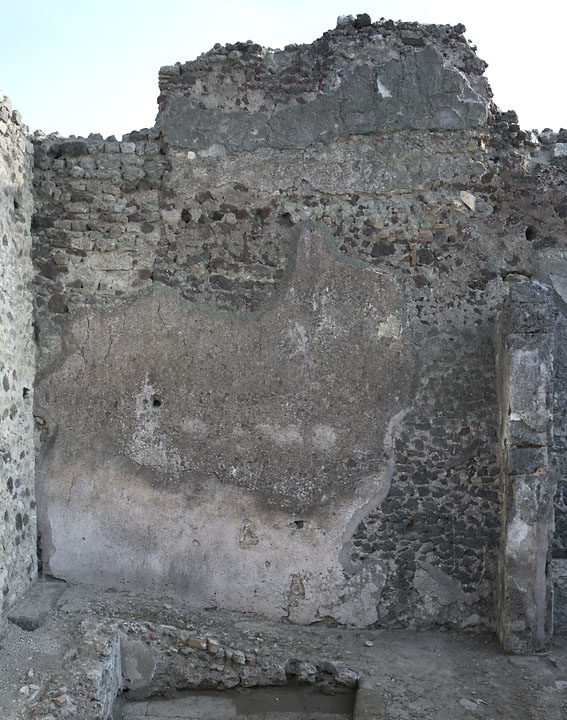East Wall
Description
Renée Forsell
The wall is constructed in op. incertum. The uppermost part is missing and the upper N part is reconstructed. Two roof tile fragments mark the reconstructed part. The lowest part of the wall is not visible due to the bench that is built in front of it. The original wall consists mainly of lava stones with occasional cruma and limestone up to the height of c. 3.0m. Above it is built almost entirely in cruma except for the reconstructed part. There is an earlier circular window, closed in antiquity, in the uppermost part of the wall.
The predominant mortar is reddish. Grey mortar is found in an oblong area above the concentration of terracotta fragments. This is a modern repair.
There are six holes visible in the wall. The first is located 1.10m from the N corner at the height of 1.85-2.00m and it was filled with ash. It is most likely a hole made for scaffolding. The other five are placed on a horizontal line at a distance of 1.30- 2.25m from the N corner at a height of c. 3.70-4.00m. The holes are 0.10-0.15m high. South of the holes the modern mortar covers the wall, which makes it impossible do determine if there were additional holes S of those recorded. There are also several pieces of terracotta in the upper S part of the wall. A horizontal indentation runs above the holes and the terracotta fragments. The installation resembles the setting of a protection roof.
Wall plaster:
There are substantial remains of plaster left on the wall. The largest part is a hydraulic plaster, and covers about half of the wall. The plaster is much weathered and contains a huge amount of crushed terracotta. The lower part of it, where the surface is intact, suggests that it was originally white. Layers of plaster coating are visible in places where the wall plaster was damaged. Another patch of plaster, surrounded by modern support plaster is preserved near the floor further S. There is a patch of modern plaster that at the height of 2.68m and 4.10m from the N corner. It partly covers a small remain of original green wall plaster. Remains of an earlier white plaster can be seen further down towards the floor, at a height of 0.35-0.45m and in cracks of the hydraulic plaster. A large patch of plaster is located above the row of holes and the horizontal indentation above it. This patch consists of two horizontal zones where the lower one has the same character as the plaster below and the upper is weathered very dark grey.
h. 5.55-4.40m; l. 4.5

